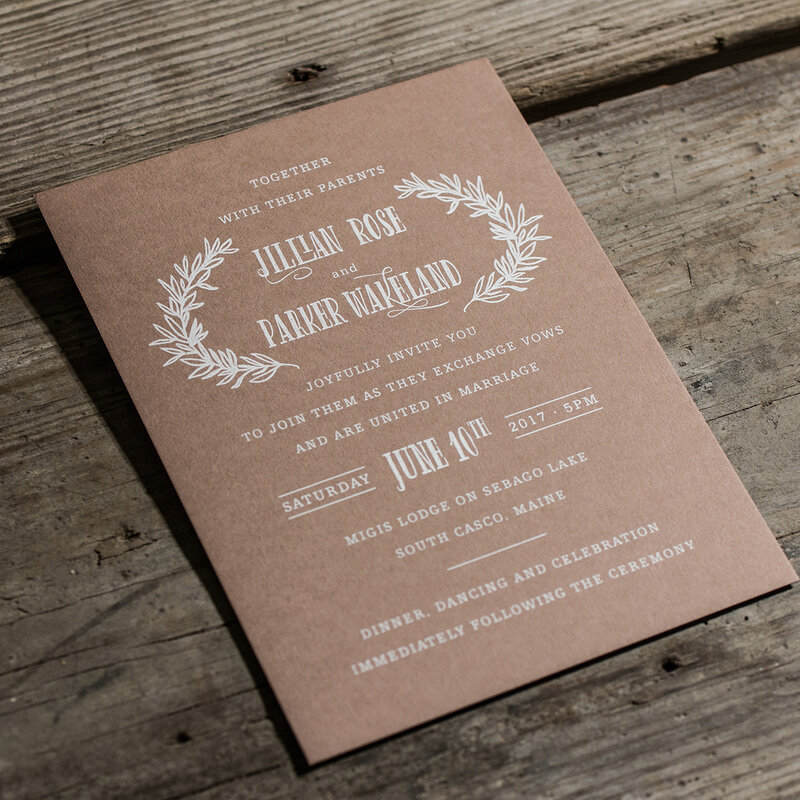Printing Methods.
Digital CMYK.
Digital printing has enabled full-color printing on card stocks, papers and envelopes at a lower cost and quicker turnaround. Digital printing is perfect for watercolor, hand-painted or multicolored aesthetics, photos and beautiful typography.
Digital White.
This digital option offers a great way to highlight white text and graphics on darker stocks with smaller quantities and quicker turnaround. Though more cost effective than foil stamping with white matte foil, digital white printing is less opaque. Type must be large enough to be legible.
Foil Stamp.
Foil stamping is the application of metallic foil, often gold, rose gold or silver, to paper where a heated die is stamped onto the foil, making it adhere to the surface leaving the design of the die on the paper. This process is a popular choice for wedding invitations as it can significantly elevate the formality of a piece.
Thermography.
Thermography is a print process that creates raised ink. For designs printed using thermography, it is best to avoid large, solid areas of color as they may blister and crack. Small or thin typography is also difficult to achieve with this print process.
Letterpress.
Letterpress printing is a technique of relief printing using a printing press. Custom dies are inked, then paper is pressed against it to transfer the ink, creating an elegant invitation. Heavy-weight cotton stocks are recommended to maximize the look of relief printing.
Blind Emboss/Deboss.
Embossing/debossing creates a raised or indented effect on selected areas of paper. The procedure uses two dies: one that is raised and one that is recessed. The dies fit into each other so that when the paper is pressed between them, the recessed die creates the embossed impression.






